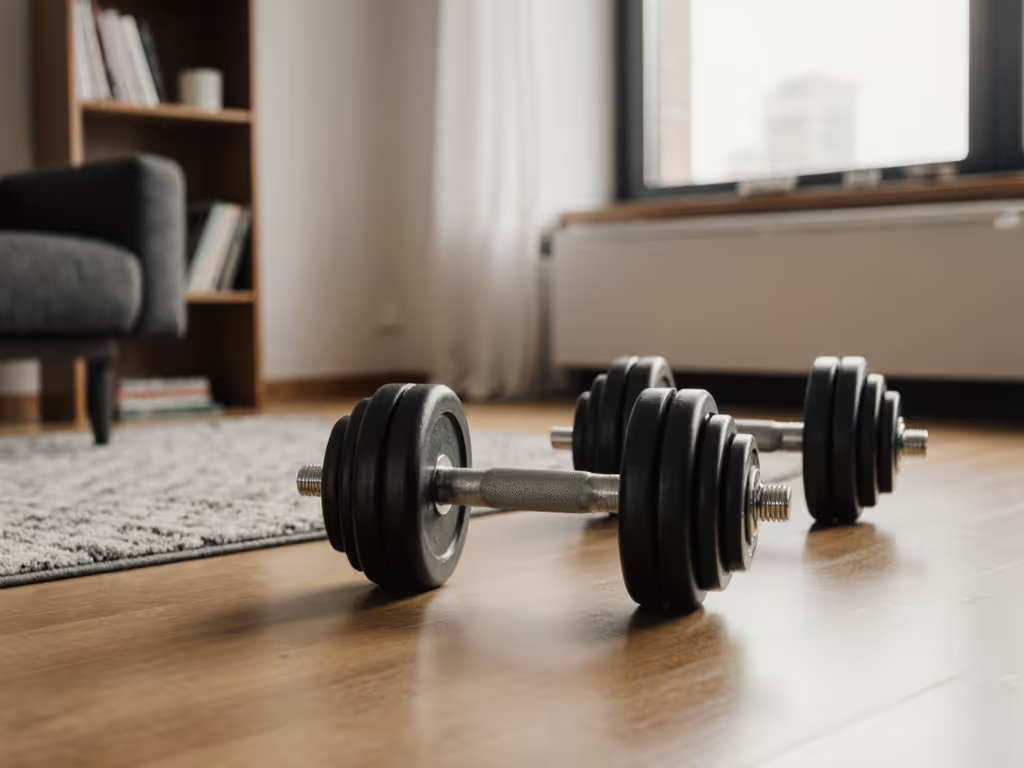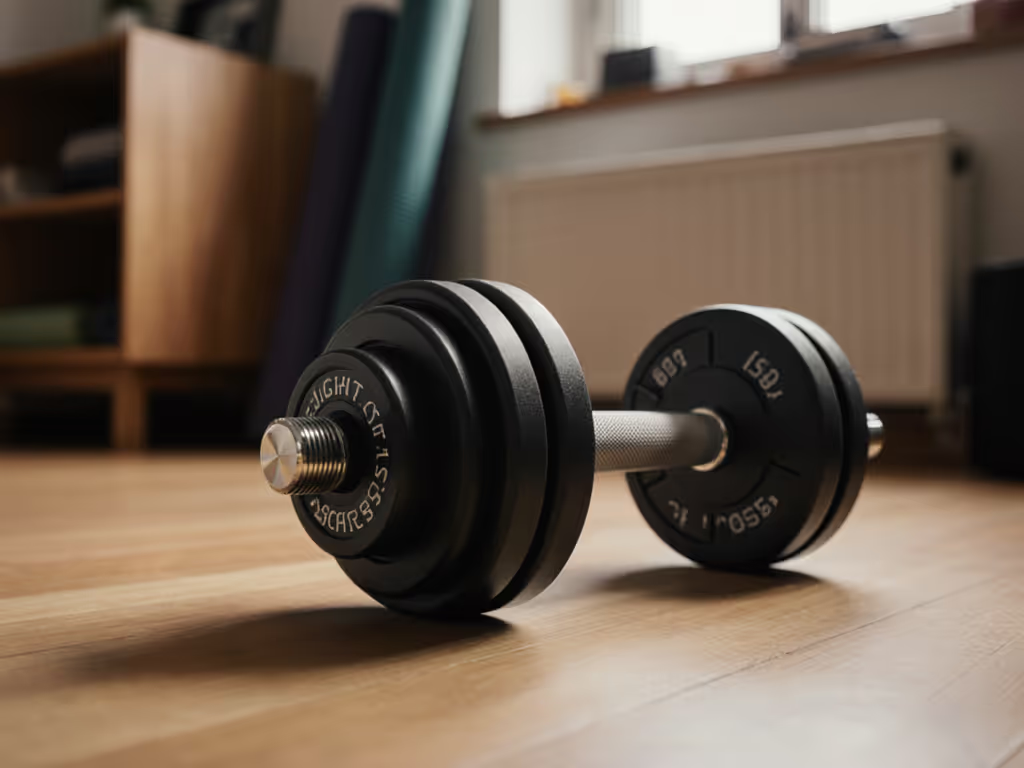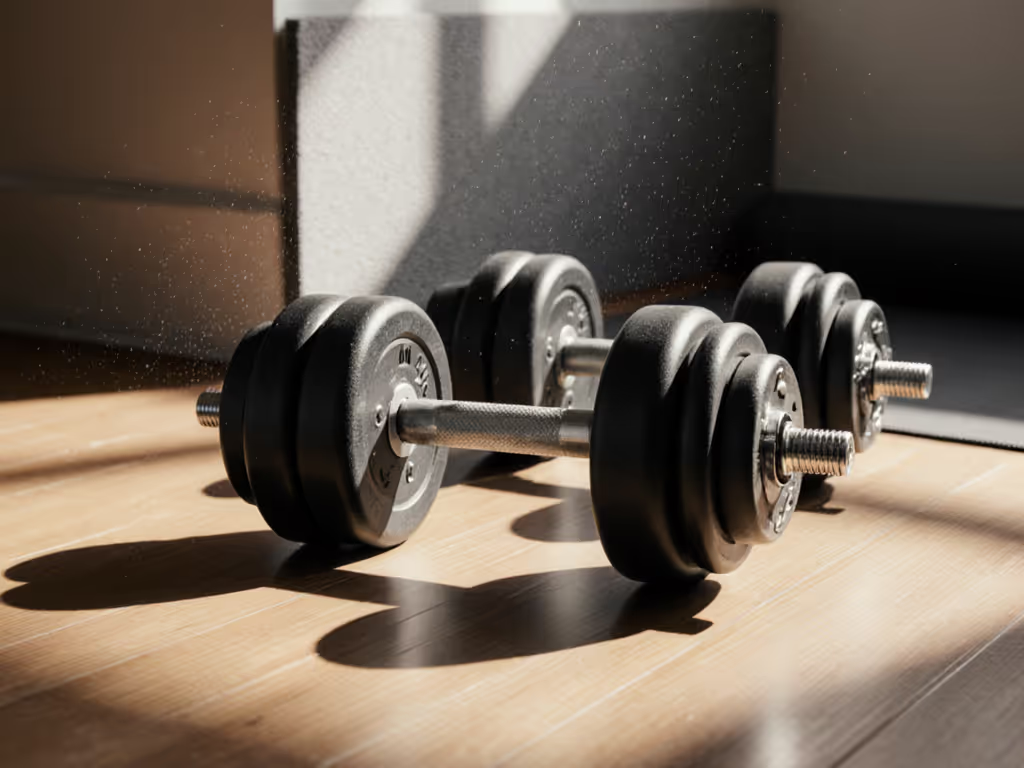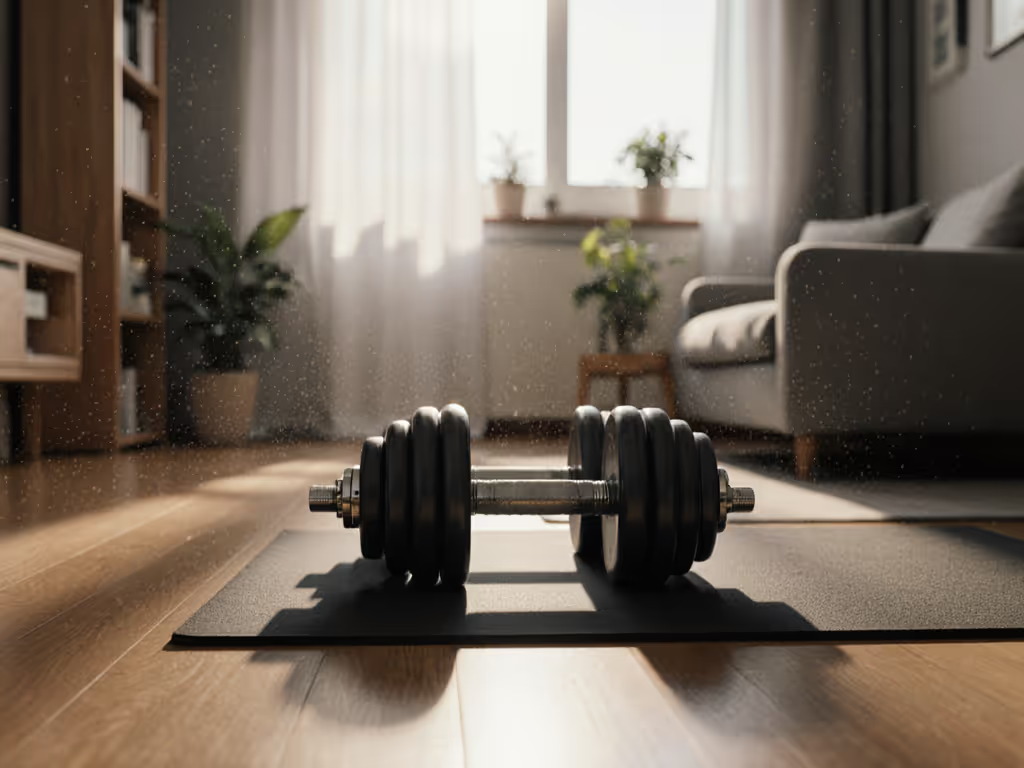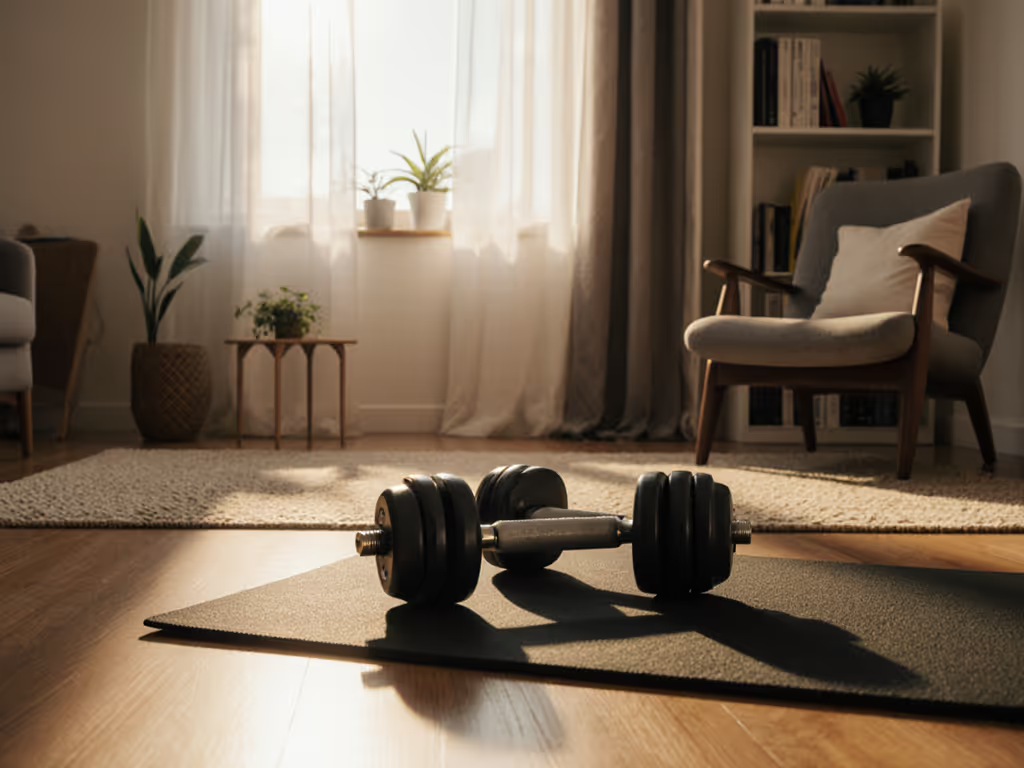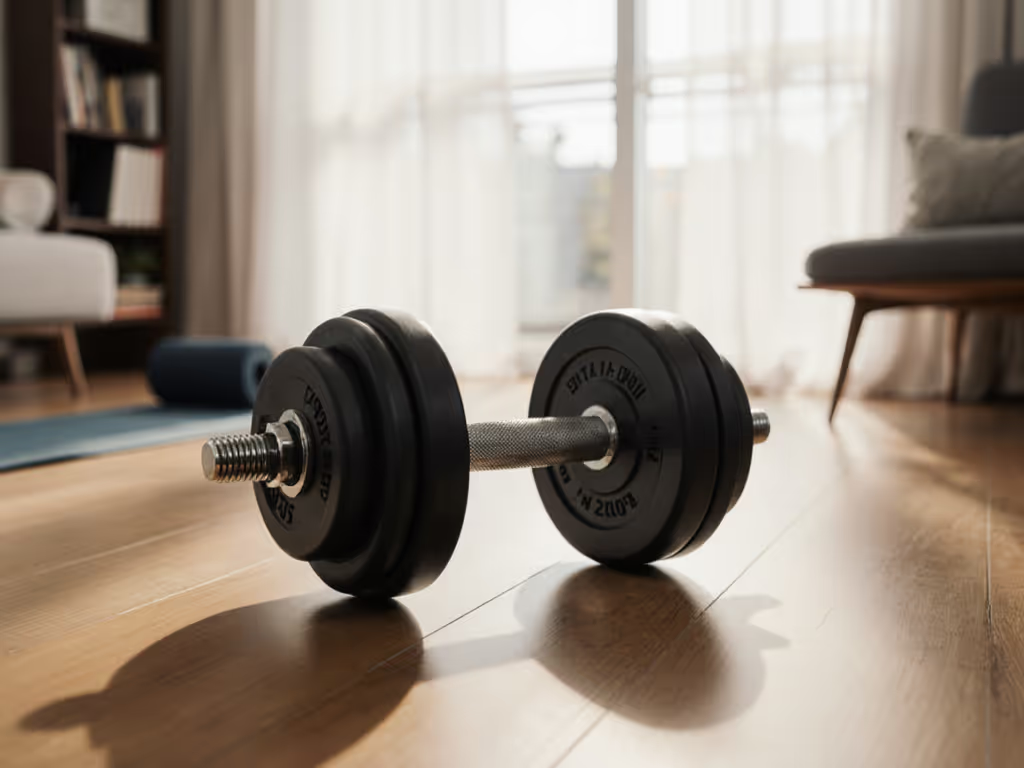If your dumbbell weight progression feels like jumping chasms instead of climbing stairs, and your neighbors can hear every 10-pound leap, you're not alone. For apartment dwellers and shared-space lifters, optimal weight increments aren't just about muscle growth; they are about nervous system quiet. When standard dumbbell jumps sabotage your progress and peace, double progression becomes your stealthiest tool for linear gains without rattling handles or flaring joints. Let's cut through the noise with a method as respectful of your body as it is of thin floors.
Why Standard Dumbbell Jumps Sabotage Progress (and Sleep)
Most home lifters face the brutal reality: free weights escalate in 5-pound increments per bell. Bench presses or curls require two dumbbells. So that "small" 5-pound jump? It's actually 10 pounds, far too steep for a sustainable muscle growth strategy. For context:
- Beginners gain strength fast but quickly stall when jumping from 15 lb to 25 lb presses.
- Intermediate lifters hit strength plateaus when chasing 40 lb to 50 lb curls despite nailing 12 reps with perfect form.
- Quiet-hour warriors can't grind through failed reps at 3 a.m. without waking housemates (or risking HOA complaints).
This isn't theoretical. I once filmed a client's wrist angles during rows, and a light sleeper's frustrated sigh from the next room became my most useful feedback. When handles rattle, grip tension spikes. Knuckles whiten. The neutral wrist vanishes. Your body braces against instability instead of owning the lift. Comfort that keeps you consistent is performance in disguise.
The Double Progression Blueprint: Smaller Jumps, Steadier Gains
Double progression solves this by decoupling weight jumps from rep ceilings. Instead of adding weight as soon as you hit your rep target, you extend within your current weight. Here's how it works cue-rich:
- Set your rep range (e.g., 8-12 reps per set).
- Stay at the same weight until you hit the top of that range (12 reps) across all sets.
- Increase weight (yes, even by 10 lbs!) and drop to the bottom of your range (8 reps).
- Repeat until you hit 12 reps again.
Data point: A 2023 velocity training study showed lifters using this method gained 19% more strength over 12 weeks vs. linear weight jumps, because they avoided stalling at arbitrary barriers. The magic? You're never truly "stuck." That 10 lb jump becomes manageable because your nervous system already owns the movement pattern.
Why This Fits Urban Training Constraints
| Traditional Progression | Double Progression |
|---|
| Requires 10 lb jumps (too steep) | Makes 10 lb jumps feel like 5 lb jumps |
| Forces grind reps at max effort | Honors quiet nervous system by prioritizing control |
| Often causes failed reps at night | Keeps reps crisp in low-light hours |
| Wastes time on aborted sets | Builds volume safely with submaximal loads |
Notice how this sidesteps strength plateau solutions like micro plates (which add clutter) or modified tempos (which lengthen workouts). You're using what you already own, just programming it smarter.
Implementing Quietly: Precision Over Power
The true test? Can you progress without disturbing a sleeping baby next door? Double progression helps, but only if your technique honors joint safety. Apply these evidence-tinted cues:
- Warm up like you mean it: 5 minutes of wrist CARs (controlled articular rotations) and 2 light sets before your work sets. Cold joints overcompensate, amplifying handle wobble.
- Measure handle stability: Press your palm against the dumbbell's end cap. If it shifts more than 1 mm, that play travels up your forearm. Prioritize dumbbells with zero lateral play (more on this below).
- Track velocity, not just reps: Can you lift the same weight 10% faster than 2 weeks ago? That's your signal to add weight, even if reps haven't maxed out. (No gadget? Time your concentric phase: if 8 reps now feel as fast as 6 reps did earlier, progress.)
This is where micro-loading techniques resonate beyond gimmicks. Adding 2.5 lbs via wrist wraps or micro plates can bridge gaps, but only if your handle geometry won't rattle. A smooth, centered knurl distributes pressure evenly, keeping grip tension low. I've seen clients ditch 5 lb jumps entirely by optimizing how they hold the weight, not just how much.
When to Break Protocol (Without Breaking Your Wrist)
Double progression isn't dogma. Adjust based on your body-aware signals:
- If form degrades before rep 8: Drop weight immediately. Wrist collapse or shoulder hiking isn't "pushing through," it's borrowing from tomorrow's mobility.
- If you're nailing 12 reps too fast: Jump to Step 3 early. Strength gains stall when volume lacks challenge.
- During quiet hours: Never push beyond 90% of your perceived max. That last 10% is where rattle happens, and neighbors notice.
Remember: progressive resistance training thrives on consistency, not catastrophe. For a deeper dive into progressive overload with adjustable dumbbells, see our full guide. One failed rep at 1 a.m. can derail weeks of habit-building. Protect your routine like your sanity depends on it (because for urban lifters, it does).
The Real Progression: From Gains to Grace
Your dumbbells shouldn't announce themselves. They should feel like extensions of your hands, gentle in grip, precise in balance, quiet in transition. Double progression isn't just smarter programming; it's respect for your living space, your joints, and your commitment to showing up daily. When you trade ego for ease, that 10 lb jump stops feeling like a cliff edge. It becomes a stepping stone.
Because the most advanced lifters I know don't chase max lifts at midnight. They chase the calm of a neutral wrist, the rhythm of controlled reps, and the peace of knowing their next set won't wake the household. Comfort that keeps you consistent is performance in disguise.
Further Exploration
- Track your bar path velocity (even via smartphone apps) to time weight jumps objectively.
- Experiment with tempo changes within your rep range before adding weight (e.g., 3-sec eccentric at 10 reps).
- Audit your dumbbell's play: minimal handle wobble = less grip compensation = quieter progress.
